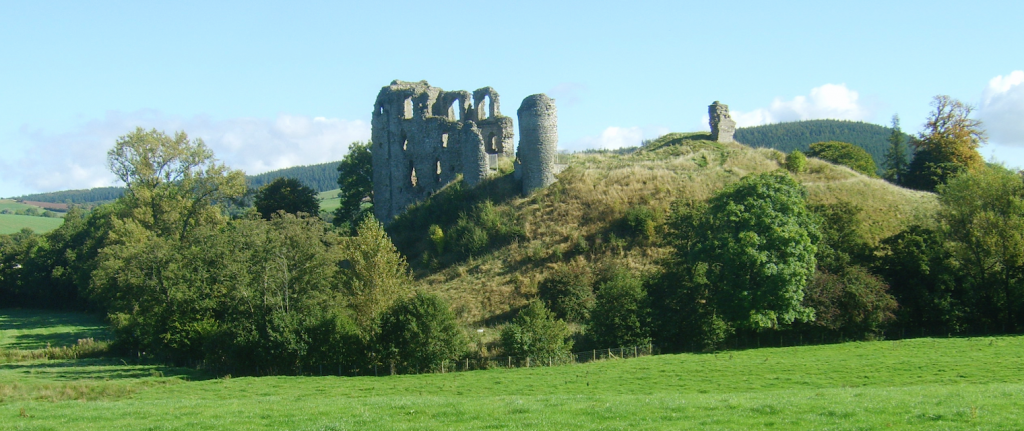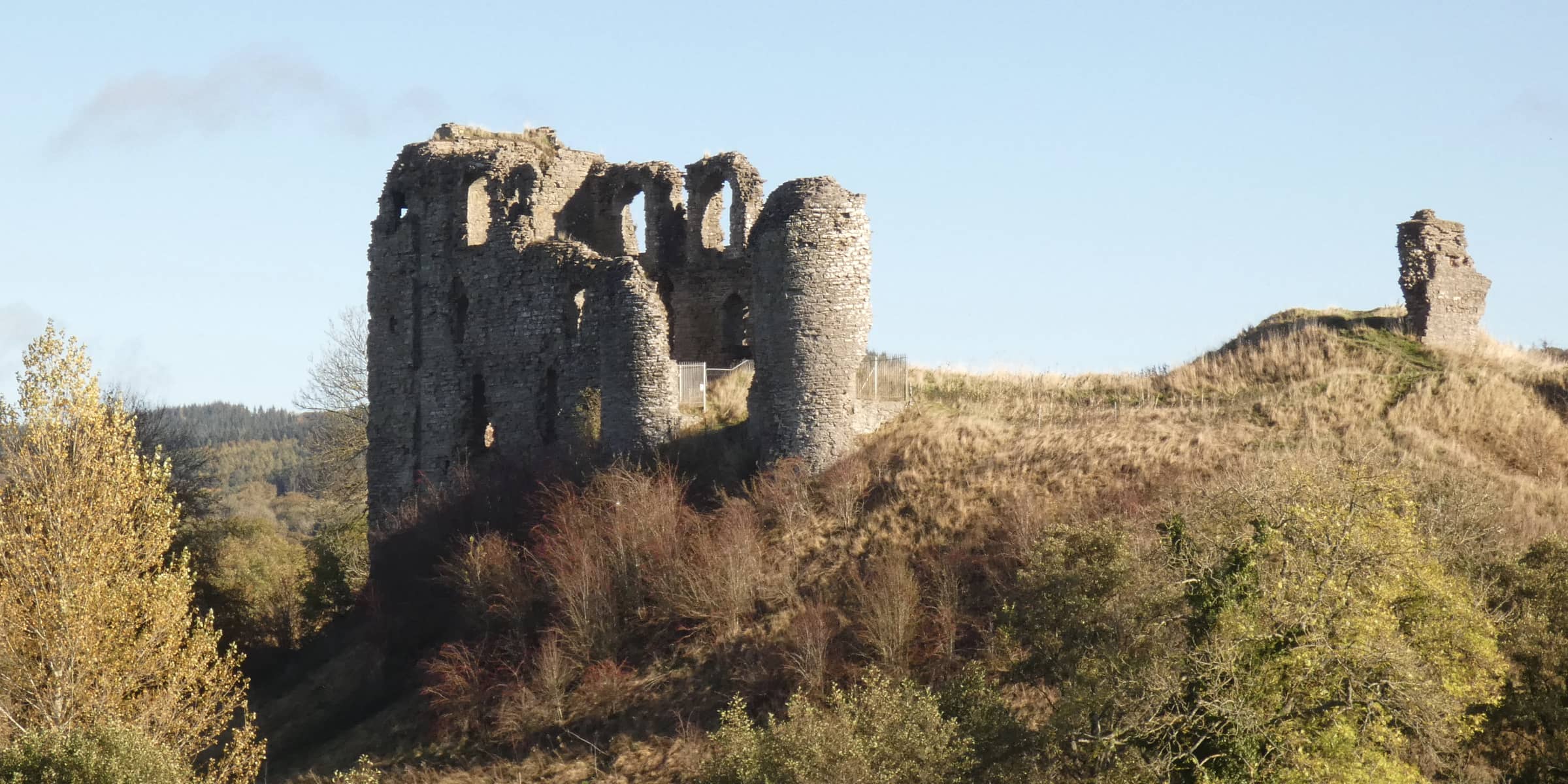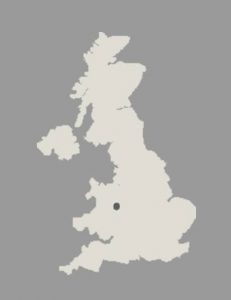Clun Castle is a ruined castle situated on the north bank of the River Clun and the western edge of the small town of Clun in South Shropshire close to the Welsh border. Clun is located 9 miles west of Craven Arms and 7 miles north of Knighton in the area known as both the Marches of Shropshire and the Welsh Marches.

Following the Norman invasion in 1066, William the Conqueror granted lands on the Welsh border to some favoured subjects who became Marcher Lords granted the rights to build castles and rule their feudal estates as if they were kings – provided they remained loyal to the English monarch.
Although ruined the remains of the rectangular keep and the two baileys do make the castle well worth visiting.

Many castles were constructed along the Welsh Marches including Clun Castle established by the Norman Lord Robert de Say.
Nowadays Clun Castle is a Grade 1 listed building and a Scheduled Monument owned by the Duke of Norfolk (who also holds the title of Baron of Clun) and is managed by English Heritage.
The castle ruins and grounds are open to the public and are free to enter.
Here are some links to more in depth information about Clun Castle:
- a Wikipedia article about Clun Castle
- the English Heritage Web page about Clun Castle
- the Castles of Wales Web page for Clun Castle featuring lots of images
Clun Castle is well worth the visit and Clun itself also has a museum and places to eat and drink.



